Our Health Library information does not replace the advice of a doctor. Please be advised that this information is made available to assist our patients to learn more about their health. Our providers may not see and/or treat all topics found herein. Adult protective underwear may be helpful for a person who has incontinence. A person who has incontinence has trouble controlling urine or stool. This underwear helps absorb urine and catch stool. There are different types of adult underwear. A washable type may be useful when a person has trouble using the disposable type. The person may get a rash in the genital area, especially if that area doesn't get cleaned well. Rashes can occur when the skin stays wet, rubs against the underwear, or comes into contact with urine and stool. The skin may look red, raw, or burned. Some people also may be allergic to the perfumes in the underwear material. Clean the groin area daily. And check for irritated skin and rashes so that you can treat them as soon as they happen. Some types of adult underwear are a pull-up style (made of elastic or cloth), and some use adhesive tabs or an elastic band with buttons. An elastic pull-up style is made of a stretchy material. With any type of adult underwear, the penis should be positioned down and centered on the body. Adhesive tab styles have tabs to help adjust and secure the underwear. Cloth pull-up styles are made to look and feel like standard briefs. Elastic band and button styles use stretchy bands with buttons at the end to secure the pull-up on each side. Some types of adult underwear are a pull-up style (made of elastic or cloth), and some use adhesive tabs or an elastic band with buttons. An elastic pull-up style is made of a stretchy material. Adhesive tab styles have tabs to help adjust and secure the underwear. Cloth pull-up styles are made to look and feel like standard briefs. Elastic band and button styles use stretchy bands with buttons at the end to secure the pull-up on each side. Current as of: December 18, 2024 Author: Ignite Healthwise, LLC Staff Current as of: December 18, 2024 Author: Ignite Healthwise, LLC Staff Clinical Review Board This information does not replace the advice of a doctor. Ignite Healthwise, LLC disclaims any warranty or liability for your use of this information. Your use of this information means that you agree to the Terms of Use and Privacy Policy. Learn how we develop our content. To learn more about Ignite Healthwise, LLC, visit webmdignite.com. © 2024-2025 Ignite Healthwise, LLC.Topic Contents
Caregiving: Adult Underwear for Incontinence
Changing the underwear
Types of adult protective underwear (male anatomy)
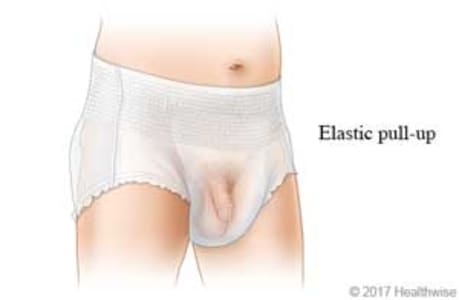

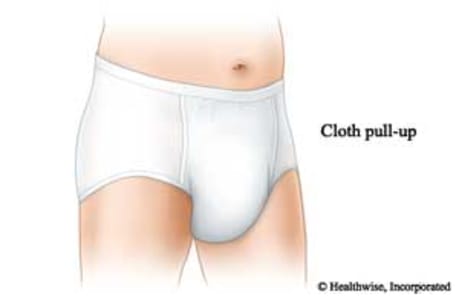

Types of adult protective underwear (female anatomy)
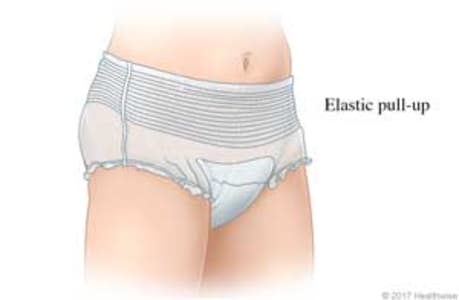
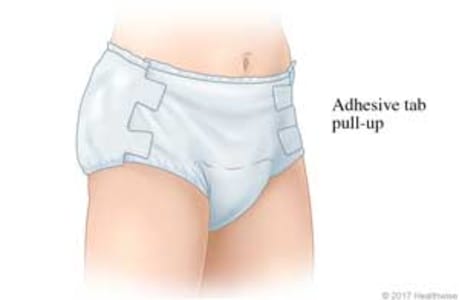
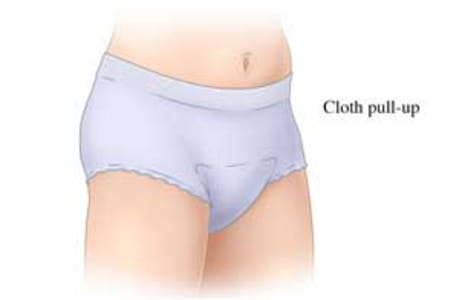
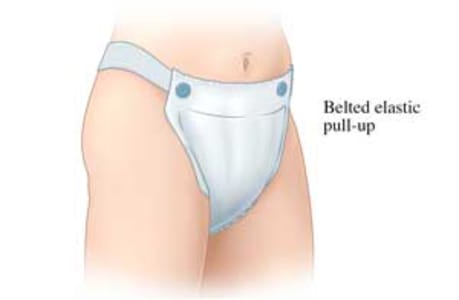
Related Information
Credits
Clinical Review Board
All Ignite Healthwise, LLC education is reviewed by a team that includes physicians, nurses, advanced practitioners, registered dieticians, and other healthcare professionals.
All Ignite Healthwise, LLC education is reviewed by a team that includes physicians, nurses, advanced practitioners, registered dieticians, and other healthcare professionals.
Our Health Library information does not replace the advice of a doctor. Please be advised that this information is made available to assist our patients to learn more about their health. Our providers may not see and/or treat all topics found herein. Current as of: December 18, 2024 Author: Ignite Healthwise, LLC Staff Clinical Review BoardCaregiving: Adult Underwear for Incontinence
All Ignite Healthwise, LLC education is reviewed by a team that includes physicians, nurses, advanced practitioners, registered dieticians, and other healthcare professionals.



